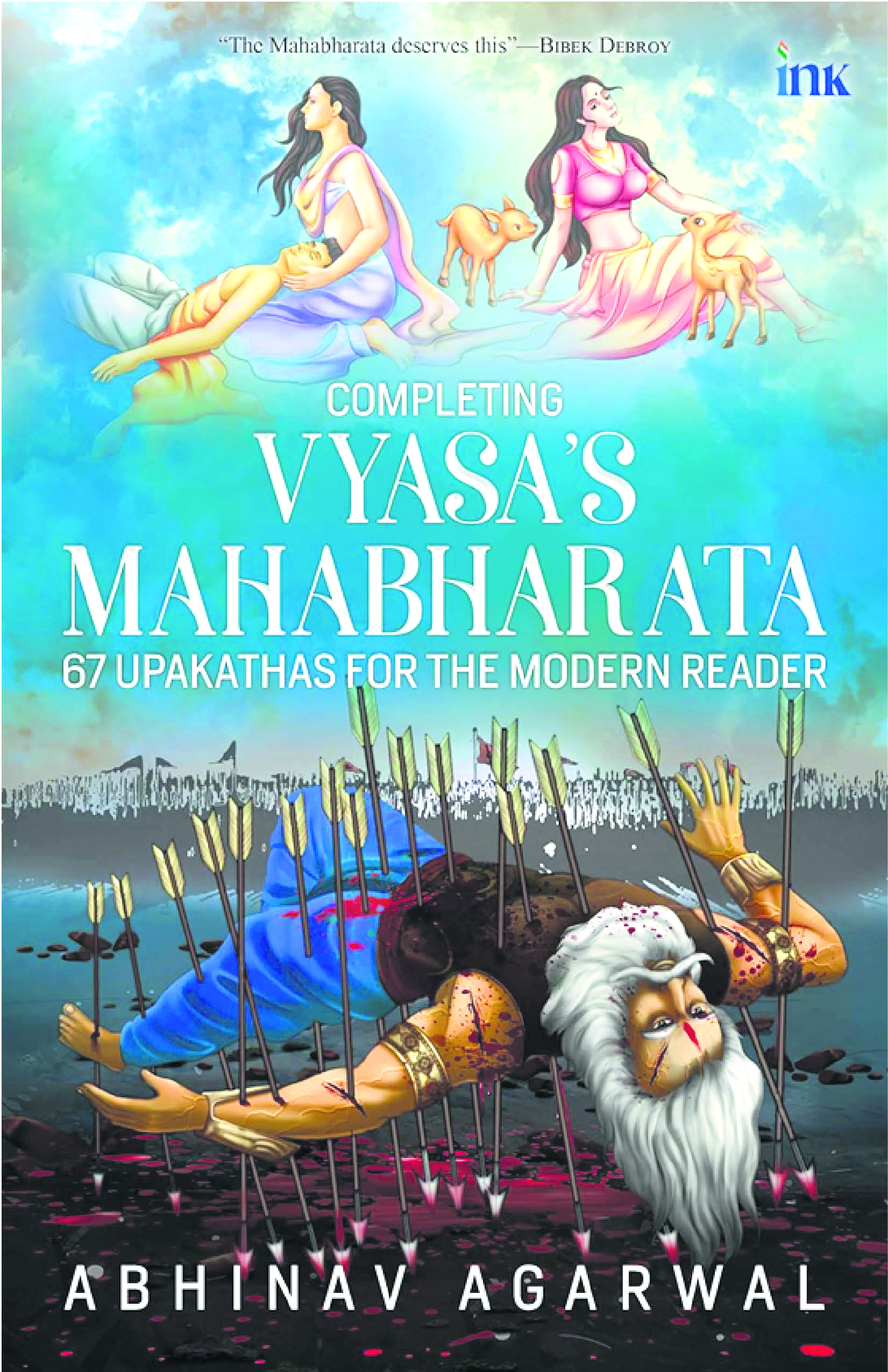The compendium of 67 upakathas, or nested stories, that are embedded along the length of the epic sheds light on not just the world of the Mahabharata but also the specific way of invocation of the past that our ancestors did.
BENGALURU
Among the many unique aspects of the Mahabharata is the epic’s way of showing us how to invoke the past by illustrating how the people of the Mahabharata referred to and learnt from their past. The anecdotes, Upakathas, Upaakyaanas, Vrittaantas, etc., are embedded across the main storyline of the Mahabharata, enriching the conversations between these immortal characters and enriching the reader’s perspective with a newer insight in every single reading. While the main storyline of the epic retains
That’s the exact gap that Abhinav Agarwal’s “Completing Vyasa’s Mahabharata” fills. The compendium of 67 upakathas, or nested stories, that are embedded along the length of the epic sheds light on not just the world of the Mahabharata but also the specific way of invocation of the past that our ancestors did. History for them was not a string of events and dates with no connection to the present. It was but a holistic cycle of the interplay between human aspirations, causal events, undercurrents of destiny, the conflicts ensuing and how the will of the Divine plays out in its intricate dynamics. That’s why itihasa is not just history but historical narratives embellished with the instructions on Dharma, Artha, Kama and Moksha, as the popular shloka tells us.
“Completing Vyasa’s Mahabharata” enables the readers to acquire a temporary distance from the main storyline and reflect upon the causal events, the similar events of the past, the insights of the storyteller as well as the listener and the relevance of invoking the whole episode to the main narrative. Through these reflections, the readers of the Mahabharata acquire a more nuanced understanding of not only the sociopolitical, metaphysical and spiritual worldviews of Mahabharata, but also in a way, a rooted paradigm of revisiting our past—a framework of reviewing our own history as our ancestors would have done it.
How did the divine forces play out before the whole lineage of Puru started its journey? How would the story of Savitri, a queen of a faraway Shalva kingdom from the distant past, assuage Yudhishthira’s troubled mind after he sees Draupadi’s ordeal at the hands of Jayadratha? How in the three worlds could the episode of Tripurasura vadha be invoked and narrated by none other than Duryodhana in his bid to influence Shalya to join forces with him instead of his own nephews, the Pandavas? Reflections of this nature that often get missed out in the singular perspective narratives of today find their due in Abhinav’s carefully curated compendium.
There are many things laudable about “Completing Vyasa’s Mahabharata”. A near chronological order of the stories that enables the reader to corroborate the same with the main storyline of the Mahabharata and gain the newer insight of the causal forces. The references and quotes from the Critical Edition over which the author weaves his very lively narration add an authentic layer without the “high and mighty” scholar line taken by some scholars. Abhinav has exploited the dynamics of dialogue and description that make the pages turn by themselves. And the fast-paced narration does not compromise the rigour of study, given the rich list of footnotes and explanations. And the best thing, each story can be read as a standalone and yet inspire the reader to his journey of exploring the Mahabharata. Though I am sure once you read the first story, the magic of the narration grips you and rest will flow at the risk of making you miss your bus stop or station if you are reading it in public transport.
As a lover of the Mahabharata, what I loved the best about “Completing Vyasa’s Mahabharata” is its ability to enrich the reading experience of even the abridged edition readers, students, young adults (including those young at heart). To those who have read the unabridged edition, the book serves as a delightful reminder of the richness of the epic as well as a ready reference for research purposes. To those who just want to start exploring the immortal world of Mahabharata, it serves as a friendly guide that helps them find their way out of getting emotionally lost because of character biases. It is a perfect companion to go with any abridged edition of the Mahabharata and is also an amazing read as a standalone.
That the author is a master of story craft is a proven fact to everyone who has read his debut work of fiction, “Predators and Prey.” I wish Abhinav follows this up with a deep dive narration of the nuggets of wisdom hidden in the Shanti and Anushasana Parvas which are a repository of a whole new world of knowledge.
Saiswaroopa Iyer is the author of bestsellers such as “Abhaya”, “Avishi”, “Draupadi”, “Mauri” and “Rukmini”.

